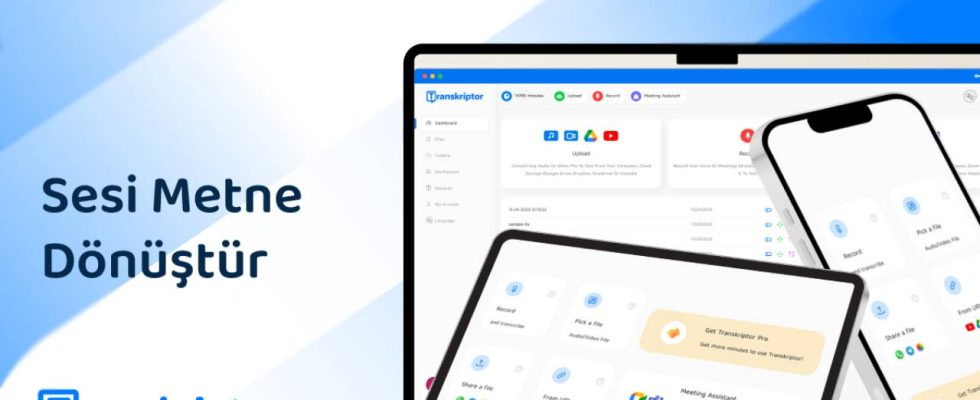The rapidly increasing popularity of video content in the digital world brings with it the need to convert them into text. This transformation is key to increasing the accessibility of content, improving SEO performance, and reaching wider audiences by overcoming language barriers. The process of converting video to text converts the rich information and content provided by videos into a written format, making it easily discoverable by search engines and thus expanding the domain of the content.
The importance of video transcription
The importance of video transcription stems from the need to maximize the reach and engagement of content in the digital age. For content creators, educators, and marketers, transcription increases visibility in organic search results by allowing videos to be better indexed by search engines.
This allows the content to reach a wider and more diverse audience. It also makes videos accessible to hearing-impaired users and appeals to audiences who speak different languages thanks to multilingual transcriptions, thus ensuring a global reach.
Uses of video transcription
- Education and Training: Converting video lectures into text enables course materials to be presented in written form. This helps students understand and review course content more easily. Additionally, transcripts integrated into learning management systems increase the searchability of educational content.
- Content Marketing: Transcribing videos provides versatility in content marketing strategies. Transcripts can be turned into blog posts, used as quotes in social media posts, or included as valuable information in e-books and white papers.
- Research and Analysis: Video transcriptions allow researchers and analysts to conduct detailed content analysis of recorded events such as speeches, interviews, and panel discussions. This is critical in academic studies or studying market trends.
- SEO Optimization: Transcribing videos and enriching them with relevant keywords can improve websites’ rankings in search engines. This helps make the content more visible in organic search results and expand the potential audience.
- Accessibility and Inclusion: Transcripts make content accessible to a wider audience, especially hearing-impaired individuals. Additionally, transcription is provided in different languages, making it easier for content to reach a global audience.
- Archiving and Search: Transcribing video content makes it easier to archive and find it in the future. This creates a valuable resource, especially for large institutions and libraries.
How to transcribe videos? Step by step guide with Transcriptor
With Transcriptor, you can easily convert your videos into text by following the steps below.
- Register/Log In: First, create an account or to Transcriptor sign in. This gives you access to all features and allows you to easily manage your files.
- Uploading the Video: Upload your video to Transcriptor. Make sure your internet connection is stable to avoid interruptions during installation.
- Start Processing: Start the transcription process. Choose the language of your video.
- Editing and Revision: Once the transcription is complete, carefully review and edit the text for any errors or unclear parts to ensure it accurately reflects the video content.
- Download: With Transcriptor, you can download your transcription in .txt, .srt, and Word formats.
What are the benefits of video transcription?
The benefits of video transcription are listed below.
- Improved SEO Performance: Transcribing videos can significantly improve a website’s SEO. Search engines index text rather than audio more effectively, making your content more discoverable.
- Increased Accessibility and Inclusivity: Transcripts make video content accessible to people who are deaf or hard of hearing, expanding your audience.
- Reaching Wider Audiences Across Language Barriers: Translated transcripts make your content accessible to non-native speakers, expanding your global reach.
- Easily Archiveable and Searchable Content: Text content can be easily stored and searched, allowing users to quickly access information.
- Facilitates Use as Study Materials: Transcripts can be used as study aids, making it easier for learners to follow and review the material.
- Enables Reuse of Content Across Multiple Platforms: Transcribed text, blog posts, articles, social media posts, etc. Reusable for, maximizes your content strategy.
